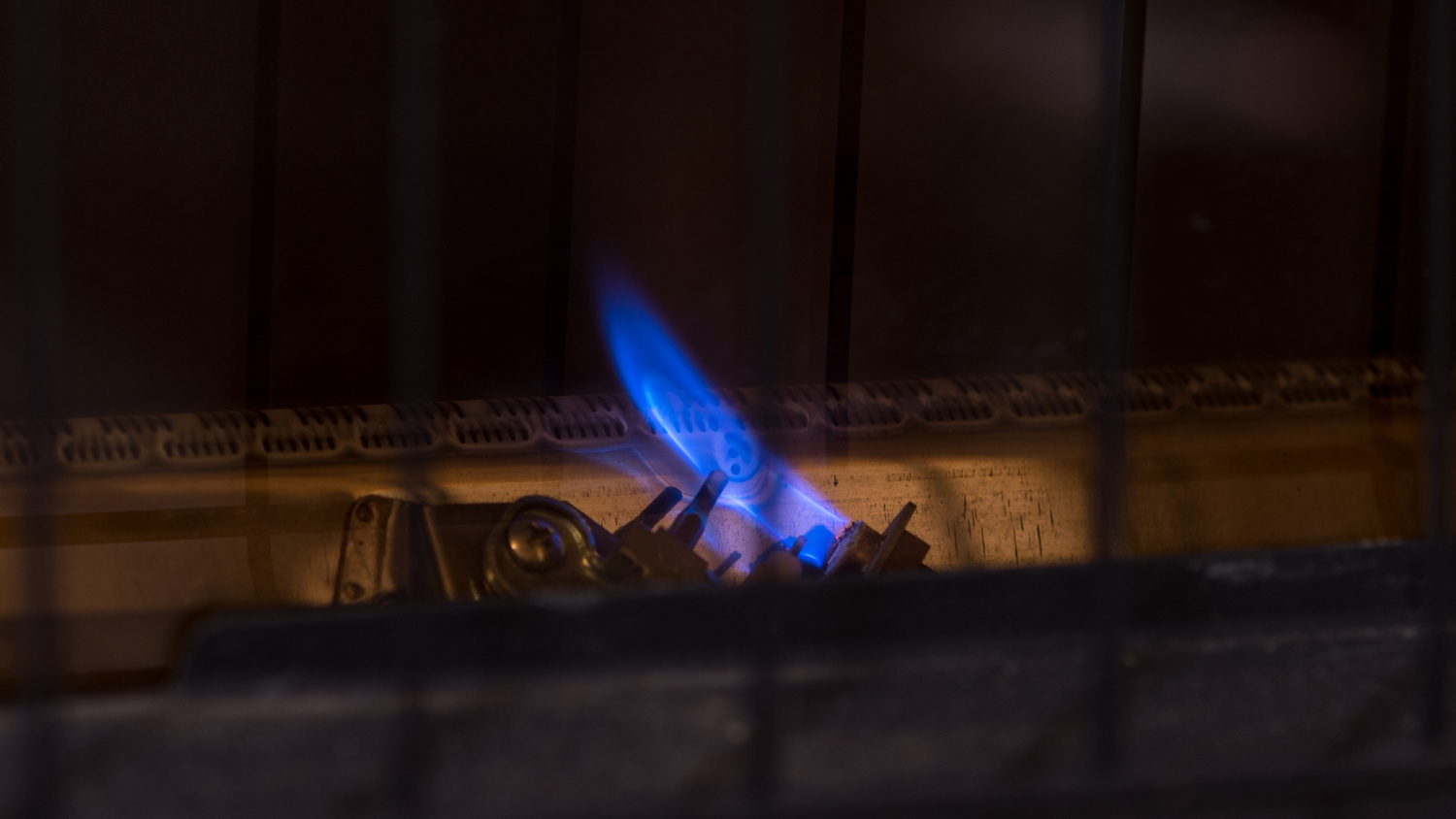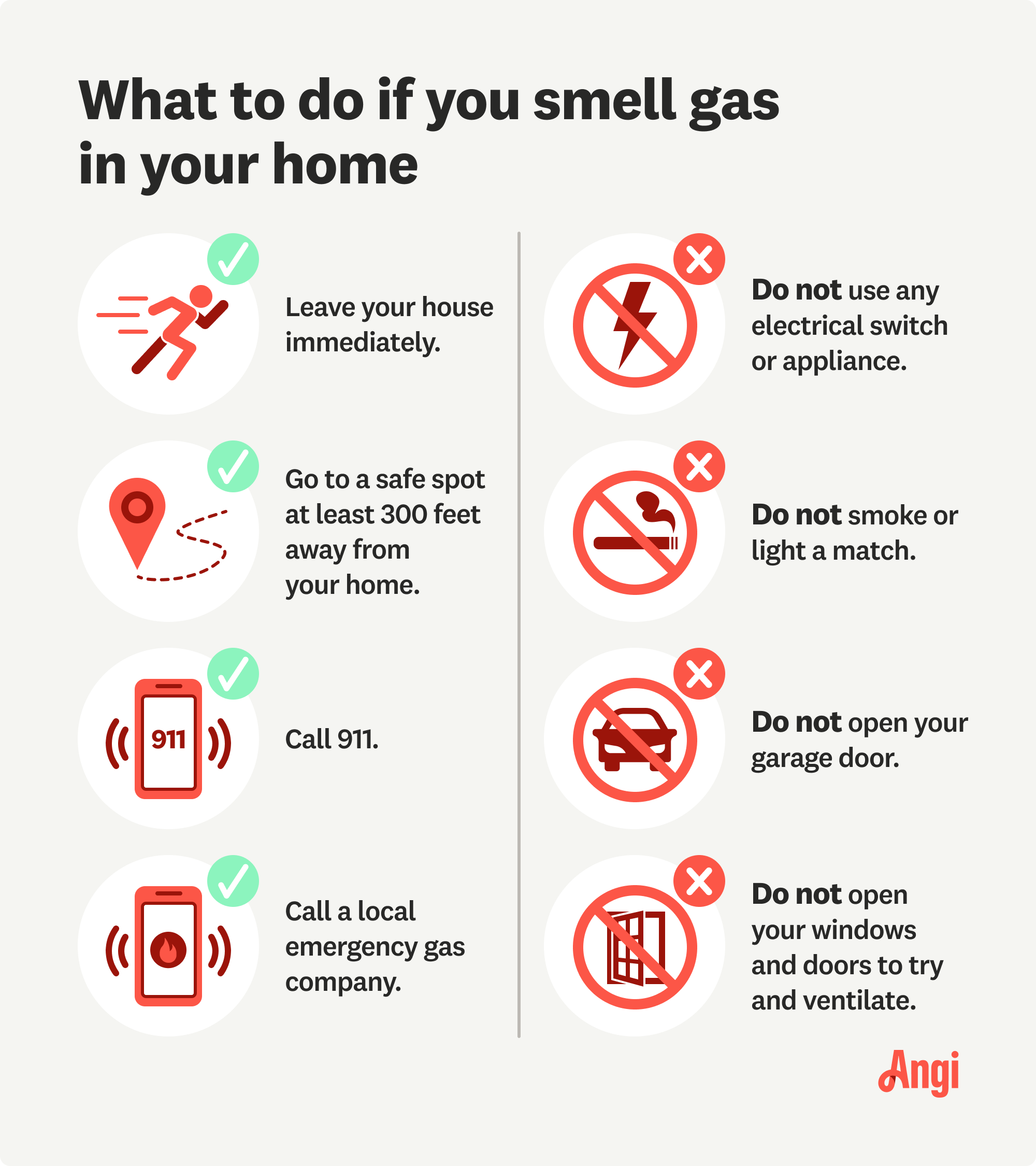Why Is My Furnace Not Blowing Hot Air? Troubleshooting 13 Common Problems
When the furnace feels more like AC, it could be one of these culprits


Change air filters at least once every three months to prevent furnace problems.
Hire a pro for annual furnace inspections and cleanings to keep the burner clean.
Checking for duct leaks costs $115 to $450.
Furnaces that are more than 15 years old may start to wear out and stop blowing warm air.
Coming in from the cold only to find your furnace isn’t working properly is a huge (and uncomfortable) inconvenience. When you notice cool air coming from the vents when the furnace should be cranking out heat, it’s time to roll up your sleeves and investigate the problem. Here are 13 common reasons why your furnace is not blowing hot air.
1. Wrong Thermostat Settings
You notice cool air coming from the vents and start to worry about expensive furnace repair bills. But in reality, the issue could be as simple as an incorrect thermostat setting. Maybe you accidentally switched the AC on instead of the furnace, or perhaps someone bumped the temperature down. Before anything else, check and adjust the thermostat to see if that helps your furnace warm back up. If you’re looking for an easy fix for your furnace not blowing hot air, this is as easy as it gets.
2. Power Disruption to Thermostat
Snowstorms and wintry weather can sometimes cause power outages, and that may disrupt the thermostat even after the power comes back on. Or, the thermostat may just have dead batteries. Refresh the batteries and check that the thermostat is on and has your preferred settings before doing further investigation as to why your furnace will not blow hot air.
3. Dirty Furnace Filters
If you can’t remember the last time you changed the furnace filters, this could be your main culprit for a furnace not blowing hot air. The furnace filter captures dust and debris, keeping contaminants from blowing out of your vents and around the house. Over time, the dust and debris can clog the filter, preventing hot air from blowing out and putting more strain on your furnace.
If the furnace isn’t blowing hot air, try changing out the filter to see if that helps. You should change the furnace filter at least once every three months, although how often you change a furnace filter will depend on the type and size of the filter.
4. No Pilot Light

A gas furnace uses a pilot light to ignite the burner for heat. If the pilot light is extinguished, say from the gas company performing maintenance or a breeze from walking by the furnace, it prevents the furnace from heating. The opening for the pilot light can also become clogged by dust and other debris. This is a common cause for a furnace blowing warm air, not hot air.
Relighting a furnace pilot light is a simple DIY task for homeowners who are familiar with their HVAC systems, but if you’re not comfortable checking for a clog or re-igniting the pilot light, call in a furnace repair pro for assistance.
5. Low or No Fuel or Power
No matter what type of furnace you have in your home, it needs fuel to produce heat. When the furnace is not blowing hot air, it could be because there’s no fuel. The propane or oil tank could be empty, so make sure your furnace has enough fuel to meet your heating needs. An outage could also be keeping your electric furnace from running.
6. Duct Leak

Ducts carry warm air from the furnace through your home. But if there are any gaps, cracks, or other damage to the ducts, it can cause cooler air to seep in and blow out through the vents. Testing for duct leaks costs $115 to $450. If there is a leak, expect to spend $500 to $4,000 to seal it, depending on the severity.
7. Clogged Burner
Like with other parts of the furnace, dust and dirt can do a number on the burner. These contaminants can build up on the burner, preventing the fuel from creating heat to blow throughout your home. Instead, the fan will continue pushing air through the vents, but the air will be cold.
It’s best to have a furnace pro inspect and clean a clogged burner to get your furnace up and running again.
8. Dirty Flame Sensor
Here’s yet another furnace component that’s rendered useless when faced with excess grime. When the flame sensor gets mucked up by dirt, it won’t signal properly to the burner. Instead, the burner may turn off, leaving the furnace to blow cooler air through the vents.
As part of your regular furnace maintenance, schedule annual inspections and cleanings to prevent dust and dirt from building up in your furnace.
"As a professional, I'd never miss out on routine servicing for my heating system. It's really easy to skip servicing your unit, but it can lead to breakdowns and high energy bills. It can be a safety issue, too."
— Yashar Mosaferi, President of Klondike AC, British Columbia, Canada
9. Blocked Condensate Line
A blocked condensate line may present two problems: a furnace that isn’t blowing hot air and a furnace that’s leaking water. The condensate line carries condensation that naturally forms during combustion. When it gets clogged with grime, it triggers a float switch, which shuts down the furnace. A pro will need to clear out the condensate line to fix the problem.
10. Overheating Furnace
When a furnace overheats, it will shut down and stop blowing warm air. The most common cause of an overheating furnace is a dirty air filter, so make sure to change the filters at least every few months. However, the furnace may also overheat when its parts are failing or if multiple vents in the home are shut.
11. High Limit Switch Problems
An overheating furnace and a faulty high limit switch go hand in hand. If the system overheats multiple times, it may cause the high limit switch to fail, preventing the furnace from blowing out heated air. When the high limit switch is dying, it can also falsely detect overheating and trigger a lockout. You’ll need a pro to replace the switch for you.
12. Improper Furnace Size
Maybe you’ve moved into a new home and are unfamiliar with the heating system, or you’ve just built an addition to the back of the house. When your furnace is too small for the space it’s meant to heat, it will have trouble properly detecting the temperature. This can cause it to blow out cooler air than expected.
A pro will be able to determine if your current furnace is too small and can even help you find out what size furnace you need.
13. Outdated Furnace
Sometimes, your furnace may stop blowing out warm air simply because it’s past its prime. The life span of a furnace is 15 to 20 years with proper maintenance. If your furnace is older or you don’t keep up with regular maintenance, it may be time for a furnace replacement.
What to Do When Your Furnace Isn’t Blowing Hot Air

When your furnace isn’t blowing hot air, there are several solutions that you can handle yourself, like readjusting the thermostat settings, reigniting the pilot light, or changing out an old filter.
However, furnace repairs like clearing out a clogged burner, replacing a faulty high limit switch, or upgrading to a larger furnace are all best left to a pro. This is especially true if you think the problem could have anything to do with your gas lines. Whether you need a furnace inspection or it’s time for furnace repairs or replacement, hire a local furnace repair company to get your home back to feeling warm and cozy.





- Furnace Repair
- Air Conditioning Repair
- HVAC Repairs
- Furnace Installation
- Wood & Pellet Stove Repair
- Dehumidifier & Humidifier Repair
- Heat Pump Companies
- Swamp Cooler Repair
- Wood Stove Services
- HVAC Companies
- Commercial A/C Repair
- Geothermal Installation
- Air Conditioning Installation
- Boiler Repair
- 24 Hour Furnace Repair
- Geothermal Repair
- Heat Pump Repair
- Humidifier Installation
- Thermostat Repair
- Thermostat Installation
- Nest Installation
- Heating & Cooling
- Heating Repair
- Furnace Cleaning
- Furnace Tune-Up
- HVAC Technicians
- Subcontractors
- Furnace Maintenance
- Plumbing & Heating Companies
- Wood Stove Inspection
- Mini Split Installation
- Wall Heater Repair
- Duct Installers
- How Does a Furnace Work? Breaking Down the Process of Gas, Oil, Electric, and Propane Heating
- How to Change a Furnace Filter in 5 Simple Steps
- What Size Furnace Do I Need? Your Guide to Finding the Perfect Fit
- How to Bleed a Furnace in 8 Steps for More Efficient Heating
- What Should You Do If Your Furnace Smells Like Gas?
- Furnace Fan Guide: When to Run the Furnace Fan
- 5 Types of Furnaces: Pros, Cons, and Which Is Best for Your Home
- 5 Reasons Why Your Furnace Fan Keeps Running With the Thermostat Off
- Should I Replace the Blower Motor or Buy a New Furnace?
- What Is an Outdoor Forced-Air Wood Furnace and Is It Right for Your Home?










